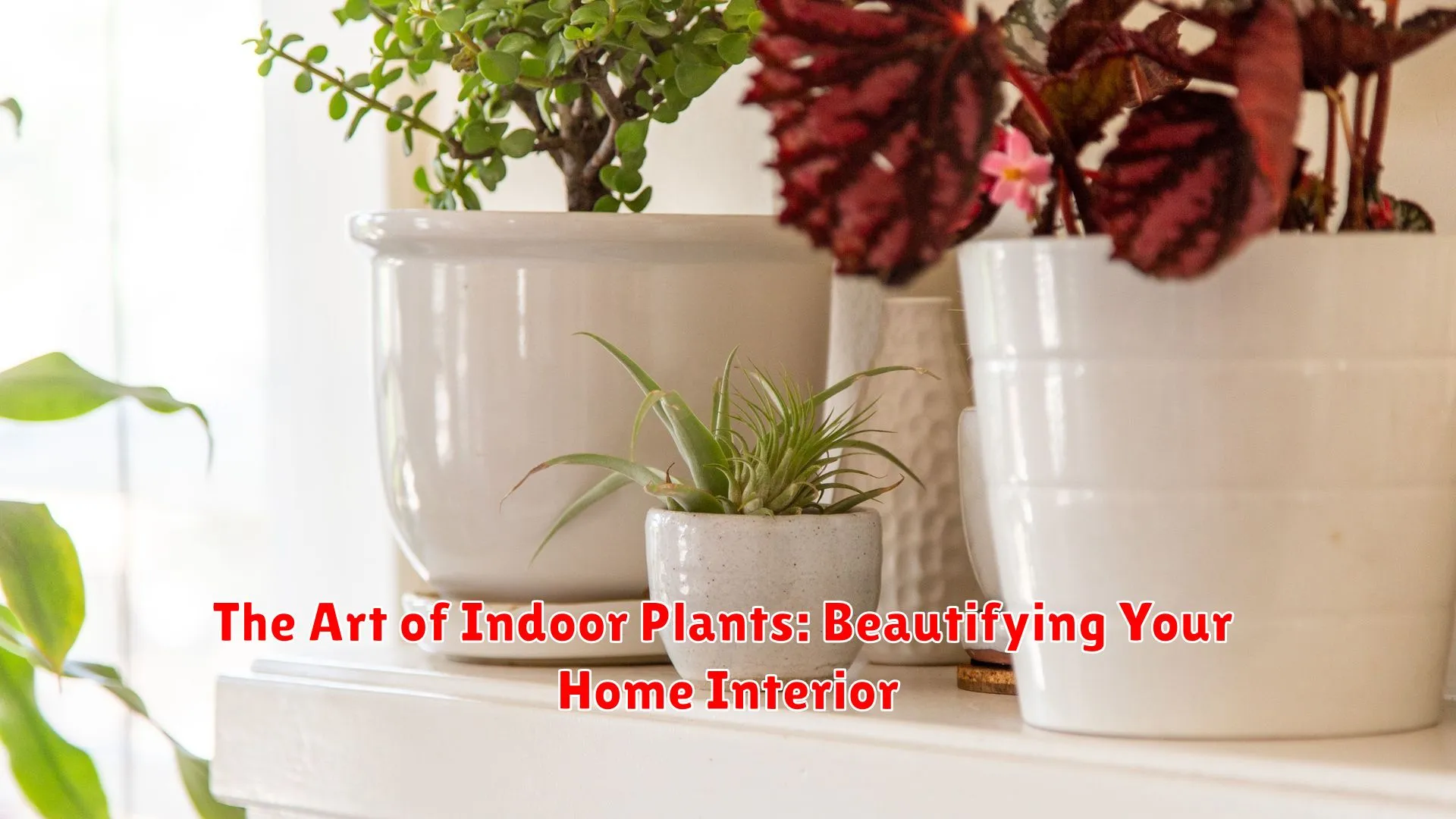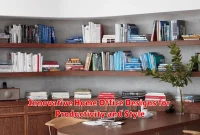Discover the transformative power of indoor plants in our article “The Art of Indoor Plants: Beautifying Your Home Interior.” Learn how to enhance your living space with greenery and create a tranquil, aesthetically pleasing environment.
Why Indoor Plants Are Essential
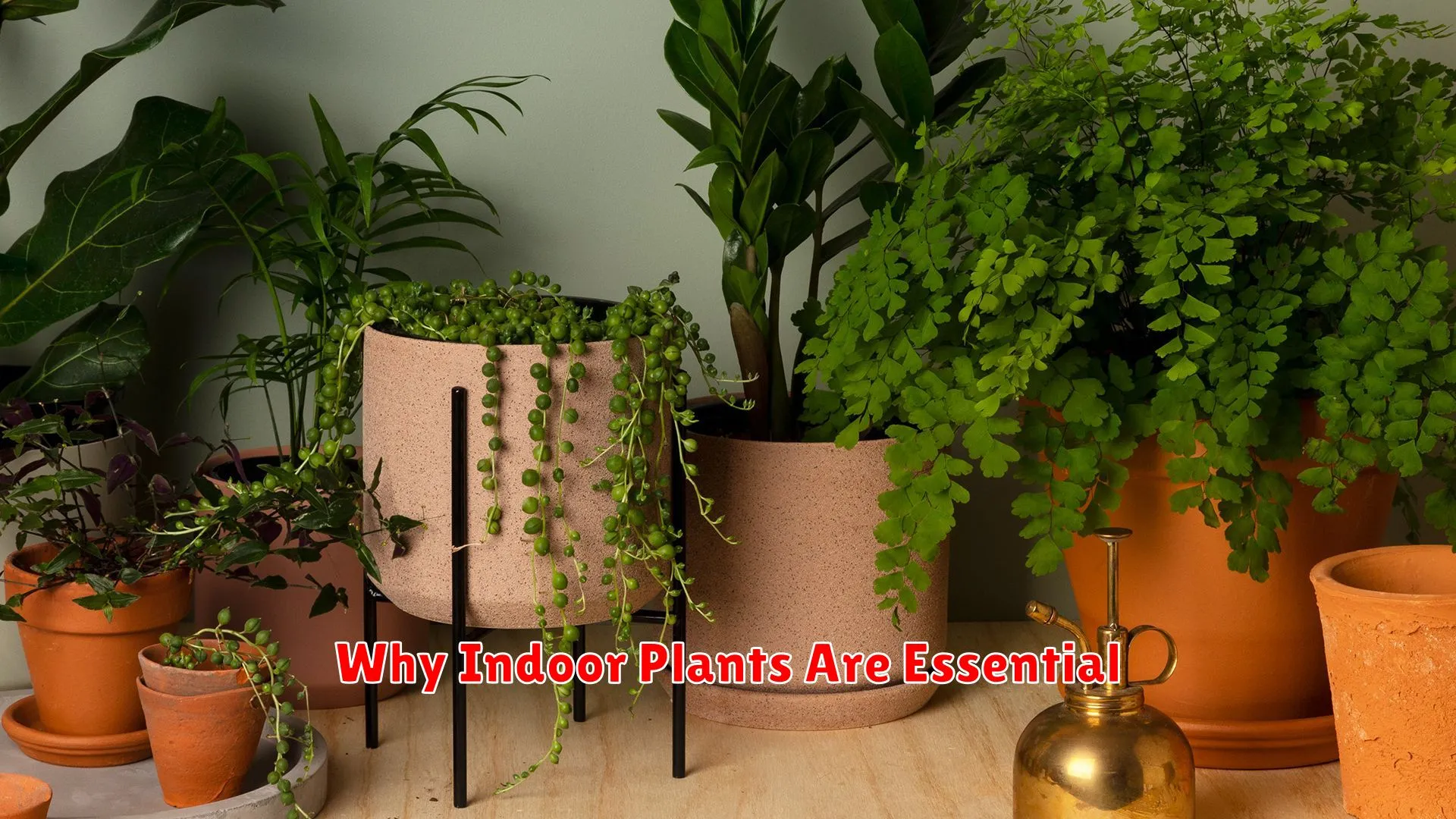
Indoor plants are not just a decor element; they play a crucial role in enhancing the ambiance and aesthetic appeal of your home interior. Here are some reasons why indoor plants are essential:
1. Air Quality Improvement
Indoor plants act as natural air purifiers, filtering out harmful toxins and improving the quality of the air you breathe. They absorb carbon dioxide and release oxygen, creating a healthier indoor environment.
2. Mental Well-being
Studies have shown that being around indoor plants can reduce stress, anxiety, and improve mood. The presence of greenery indoors has a calming effect on the mind and contributes to overall well-being.
3. Enhancing Interior Design
Indoor plants add a touch of freshness and vibrancy to any space. They can liven up dull corners, soften harsh lines, and complement different decor styles, making your home visually appealing.
4. Boosting Productivity
Having indoor plants in your workspace or home office can increase productivity and concentration. Plants have been shown to reduce fatigue, enhance creativity, and promote a sense of contentment.
Whether you have a green thumb or not, incorporating indoor plants into your home interior can bring numerous benefits beyond just aesthetics.
Choosing the Right Plants for Your Home

When it comes to enhancing the ambience of your living space, indoor plants can play a key role. The first step in beautifying your home interior with plants is choosing the right ones that fit your style, space, and care requirements.
Determine Your Lighting Conditions
Before selecting plants, assess the natural light available in your home. Some plants thrive in bright, indirect light, while others can tolerate low-light conditions. Consider placing high-light plants near windows and low-light plants in areas with less sunlight.
Consider Your Space
Take into account the size and layout of your home when choosing plants. Opt for tall plants like Fiddle Leaf Figs for spaces with high ceilings and compact varieties such as Spider Plants for smaller areas. Hanging plants are ideal for adding greenery without taking up floor space.
Account for Maintenance
Each plant has unique care requirements. If you have a busy schedule, consider low-maintenance options like Snake Plants or ZZ Plants. For those with a green thumb, more demanding plants such as Orchids or Ferns might be a perfect fit.
Add Variety to Your Collection
Creating visual interest by mixing different plant shapes, sizes, and textures can elevate your indoor garden. Combine trailing plants like Pothos with bushy plants like Peace Lilies for a diverse and dynamic display.
Plant Care and Maintenance Tips

Indoor plants are not only great for adding a touch of green to your home but also for improving air quality and creating a peaceful ambiance. To ensure your indoor plants thrive and beautify your home interior, here are some key care and maintenance tips:
1. Light:
Place your indoor plants in locations where they can receive adequate sunlight or artificial light. Be mindful of each plant’s specific light requirements to prevent issues like yellowing leaves due to too much or too little light.
2. Watering:
Proper watering is essential for plant health. Be sure to water your plants according to their individual needs; some may require frequent watering, while others prefer more sporadic watering. Always check the soil moisture level before watering to avoid overwatering.
3. Humidity:
Indoor plants can benefit from increased humidity, especially in drier environments. You can increase humidity by misting the plants, placing a humidifier nearby, or grouping plants together to create a microclimate.
4. Pruning:
Regular pruning helps maintain the shape and health of your indoor plants. Trim any yellowing or dead leaves, remove spent blooms, and cut back any overgrown branches to encourage new growth.
5. Fertilizing:
Provide nutrients to your indoor plants by fertilizing them regularly but sparingly. Use a balanced indoor plant fertilizer to promote healthy growth without risking fertilizer burn.
6. Pest Control:
Monitor your indoor plants for signs of pests such as spider mites, aphids, or mealybugs. Treat infestations promptly using natural or chemical solutions to prevent pests from damaging your plants.
7. Repotting:
As indoor plants grow, they may outgrow their current pots. Keep an eye on rootbound plants and consider repotting them into larger containers with fresh potting mix to provide more space for growth.
Styling Your Space with Plants
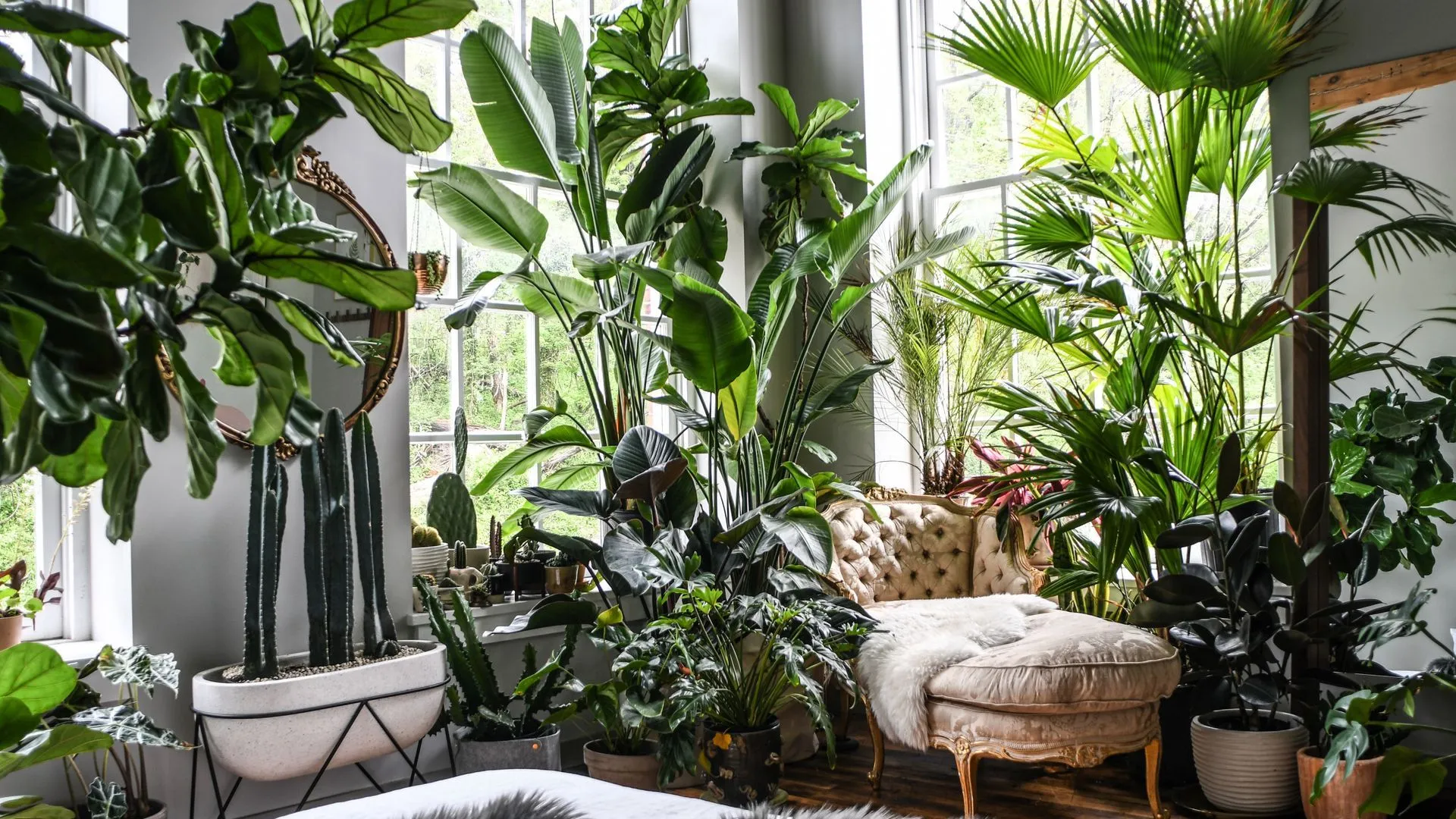
Integrating indoor plants into your home interior is not just a trend but also an art form that can elevate the ambiance of your living space. Bringing nature indoors by strategically placing plants can transform a room and create a calming and inviting atmosphere.
Benefits of Indoor Plants
Indoor plants not only add aesthetic appeal but also offer numerous benefits. They help purify the air by absorbing toxins and releasing oxygen, creating a healthier environment for you and your family. Plants also have a proven calming effect, reducing stress levels and promoting overall well-being.
Choosing the Right Plants
When selecting indoor plants, consider factors like lighting, humidity, and maintenance requirements. Low-light plants such as snake plants and pothos are ideal for spaces with limited sunlight, while succulents thrive in dry conditions. Make sure to choose plants that suit your lifestyle and the specific conditions of your home.
Creative Plant Display Ideas
Get creative with how you display your indoor plants to enhance the visual appeal of your space. Hanging planters, wall-mounted shelves, and decorative pots can add a touch of style to any room. Grouping plants of varying sizes and shapes can create a visually pleasing arrangement that adds depth to your decor.
Maintenance Tips
Proper care is essential to keep your indoor plants healthy and thriving. Be sure to water them according to their specific needs, provide adequate sunlight, and regularly dust the leaves to keep them clean. Monitoring for pests and diseases is also crucial for maintaining the beauty of your plant collection.
The Benefits of a Green Interior
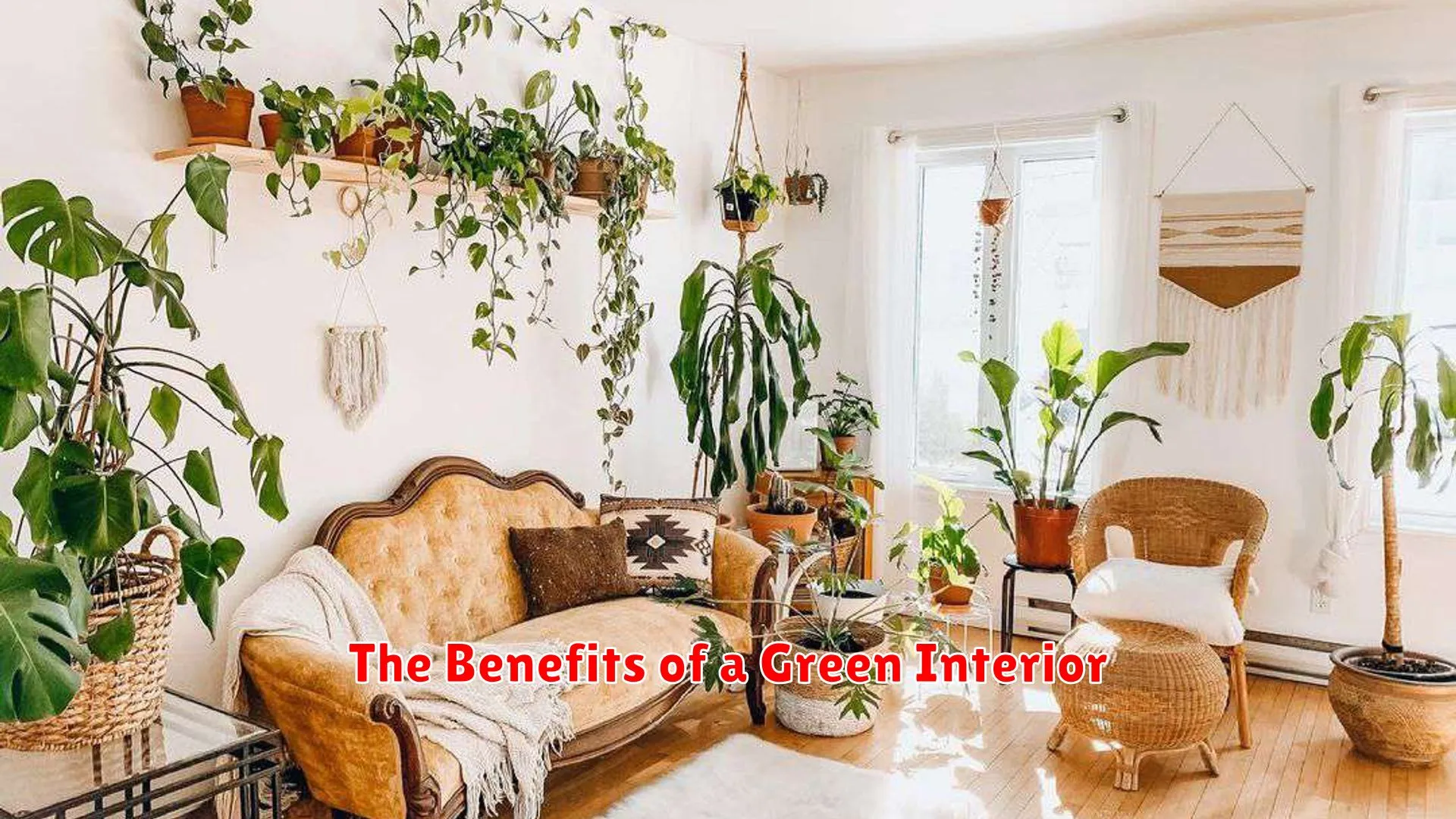
Indoor plants not only add aesthetic value to your home interior but also come with numerous benefits that can enhance your overall well-being.
1. Air Purification: Indoor plants act as natural air purifiers by absorbing toxins and releasing fresh oxygen, creating a healthier indoor environment.
2. Stress Reduction: Studies have shown that being around plants can reduce stress levels and promote a sense of calmness and relaxation.
3. Improved Mood: The presence of greenery indoors can help uplift your mood and combat feelings of anxiety or depression.
4. Enhanced Productivity: Having plants in your home can boost your productivity and concentration, making you more focused and efficient in your daily tasks.
5. Temperature Regulation: Plants can help regulate indoor humidity levels and maintain a comfortable temperature, creating a more pleasant living environment.
6. Sound Absorption: Some indoor plants have the ability to absorb sound, reducing noise pollution and creating a peaceful atmosphere.
7. Connection with Nature: Bringing nature indoors allows you to feel more connected to the natural world, even in a urban setting.
Conclusion
In conclusion, incorporating indoor plants is an excellent way to enhance your home interior with beauty and freshness.

